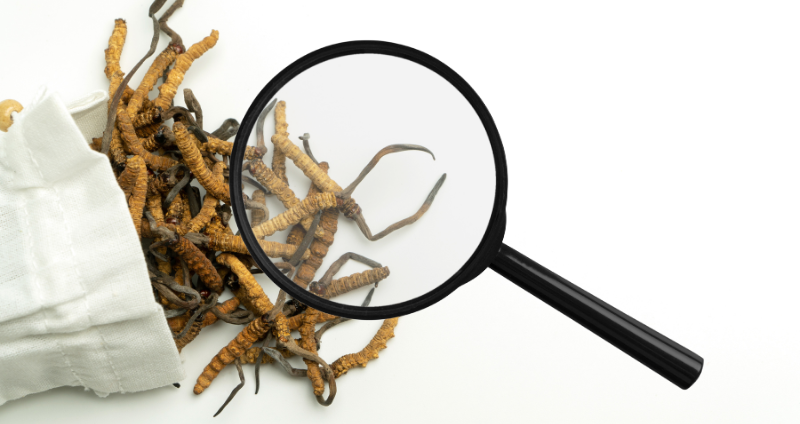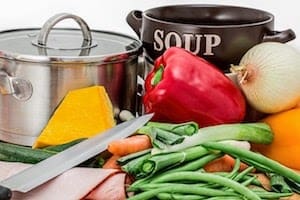Menu



Whether a mushroom extract powder should be extracted with water or alcohol or both is a question that comes up often.
But first, let's address a fundamental question: what is mushroom extract? In general, an extract is defined as a substance made by extracting a part of a raw material, often by using a solvent such as ethanol or water.
Hot water is a very traditional mushroom extraction process and is the most common. Pure alcohol is rarely used when making extract powders. When both water and alcohol are used, this is called a dual extract.
It is important to make sure the correct solvent is used since many mushrooms do not need dual extraction and may potentially be negatively impacted. Not only that, in many cases, non-water-soluble compounds can be preserved without the need for alcohol extraction.
Note: This is addressing commercial mushroom extract powders where the liquid has been removed. If you are making your own tinctures this generally does not apply unless you are precipitating out a portion of the alcohol (see Dual Extract with Less Beta-glucans).
In general, an extract is defined as "a substance made by extracting a part of a raw material, often by using a solvent such as ethanol or water. Mushroom extracts may be sold as tinctures or in powder form."
In this case of a mushroom extract, the raw material is mushrooms (fruiting bodies) and the solvents are water and alcohol (typically ethanol). The solvents may be removed to leave behind a mushroom powder, or may be left behind to create a liquid tincture.
The reason for mushroom extraction is to make the natural, beneficial compounds more readily available to our bodies. The fungal cell wall is made up of chitin, which is the same tough substance that crustaceans make their shells from. Our bodies typically lack the chitinase enzyme to digest chitin so much of the wild mushrooms we eat as food end up as insoluble fiber which is great food for our gut but the beneficial compounds we want end up locked inside this chitin cell wall.
This is where mushroom extraction comes into play. By using common extraction techniques, we can break down this chitin and give our bodies easier access to the beneficial compounds.
It might not be obvious, but most people consume some kind of hot water extract daily—common hot water extracts are coffee, tea, bone broth or soup stock. In these cases, the solvent (hot water) remains behind to be consumed along with the compounds that were extracted from raw material.

The raw materials could be tea leaves, mushrooms, vegetables, or beef bones. These get cooked in hot water for a set period of time. Once the cooking is finished, the liquid is drained off and preserved while the solids are thrown away.
Cooking with hot water will extract out any water soluble compounds, and some of the insolubles, from our raw material. These will now be contained in our extraction liquid. Some compounds that are not soluble in water will be left in the solids that get thrown away at the end of the cooking period.
Important Note: a commercial mushroom extract is a bit more complex than this in terms of pressure, temperature, and surface area of raw materials, but the example above is a good general simplification.
Now, our final liquid can either be consumed as a liquid or in the case of an extract powder, this liquid is removed (usually by a spray dryer which evaporates all the water), leaving you with a dry powder containing bioactive compounds.
For mushrooms, the primary water-soluble compounds are polysaccharides like beta-glucans.
If we want our extract to contain all the water-insoluble compounds, we will need to extract the raw materials with something other than water. This is where the alcohol comes in. The alcohol will extract the water-insoluble compounds into our liquid.
With the leftover solids from our hot water extraction, we will now add them to a mixture of alcohol and water and continue to cook the solids for a set period of time. Once the cooking is done we will separate the liquid from the solids and add this liquid to our first hot water extract liquid.
Voila! A Dual Extract.
This is all and well but was it really necessary?
There's a lot of talk specifically about the need to use dual extracts to get a "full-spectrum" of compounds available in the mushroom.
But the question is: what are these compounds?
In a reishi double mushroom extraction, we have triterpenes like ganoderic acids, many of which are water-insoluble.[2] [3] These are an important component of reishi mushrooms which should be present in any high-quality reishi product.
Triterpenes give reishi its bitter flavor and this bitterness is a good quality indicator for reishi. Reishi products that aren’t bitter can be assumed to have negligible amounts of triterpenes.
A chaga double extraction will help to isolate triterpenes and sterols like inotodiol, trametenolic acid, and betulinic acid. These bioactive compounds are primarily non-water soluble.
For certain mushrooms like cordyceps, lion's mane, turkey tail, shiitake and maitake there aren't any primary water-insoluble compounds of note.
For these reasons, we recommend dual extracts of reishi and chaga as we have in our 5 Defenders Mushroom Complex. However, for the other mushrooms, it's not entirely necessary and potentially detrimental to employ dual extraction.
The other issue with many of these water-insoluble, bioactive compounds is the ability to measure them. Many of these beneficial compounds currently cannot be measured at commercial laboratories so we don't even know if they are present in the final product.
We can measure the triterpenes in Reishi using HPLC and guarantee them, like in our Reishi 415.
Inotodiol in Chaga can be measured, although very few labs can perform this test.
The measurement of these compounds adds an additional layer of quality. This is why we recommend that any product you choose have measured levels of beta-glucans and not polysaccharides.
It's great to say "this is a dual extract" but without any analysis of the compounds that are supposed to be present, you have no proof if they are actually there.
Maybe the raw materials were of low quality?
Was it a poor extraction?
Maybe fillers like starch and grain were added?
Is it being called a dual extract when it actually underwent a hot water extraction process?
The term "dual extract" or "hot water extract" for that matter don't provide any real context without the analysis of the compounds they are meant to extract.
We have seen test results of dual extracts that actually have fewer beta-glucans (one of the key functional compounds in mushrooms) than their hot water extract counterparts. This is due to the fact that polysaccharides precipitate out in alcohol and are removed from the final liquid in the filtration process. This essentially removes many of the beta-glucans.
Herbalist and traditional medicine specialist, Subhuti Dharmananda Ph.D., has said the following in regards to alcohol extractions for:
In some cases, such as the immune-enhancing polysaccharides of astragalus, lonicera, functional mushrooms, and other herbs, alcohol is actually a poor medium for extraction because it causes the desired components to condense out of the liquid (thus none is left in the finished product).[1]
Here are some testing details courtesy of Nammex:
| Beta-glucans | Alpha-glucans | |
| Reishi mushroom hot water extraction | 26.23% | 4.59% |
| Reishi mushroom alcohol / hot water extraction | 5.5% | 2.5% |
Both extracts are the same ratio. A high alcohol percentage in the dual extract was used specifically to create a high triterpene extract.
So for mushrooms that have few water-insoluble compounds, extracting using the hot water method is a more valid method of extraction. For our 5 Defenders Mushroom Complex, our shiitake, maitake and turkey tail extracts are all hot water extractions. This keeps the levels of beta-glucans high.
What if, at the end of the hot water extraction process, instead of discarding the solids, you included them in the final product?
Would the water-insoluble compounds be present without alcohol extraction?
Of course, they would.
As they are present in the raw materials and nothing is being removed during the extraction process, they would end up in the final product.
You may have noticed that our Chaga Extract is made through a hot water extraction and not a dual extraction. This is because the extraction process for this product does not remove any of the raw materials. All of the raw chaga is still present in the final extract powder so any water-insoluble compounds are still present.
Our Cordyceps-M, Lions Mane Extract and Chaga Extract are all special proprietary extracts from Nammex that still include the entire mushroom. Nothing is removed during the mushroom extraction process so while they are hot water extracts, all the non-water soluble compounds are still present. No functional constituents or naturally occurring compounds are removed.
It may be simplistic to say that everything needs to be dual extracted.
Extraction is definitely a must for functional mushrooms but as we’ve seen above. Not all mushrooms need to be dual extracted and in some cases, it’s actually detrimental. Plus, without analysis to back up that mushroom extraction, it gives no guarantee of quality.
Real Mushrooms continues to stay on the forefront of mushroom research and we will always look for ways to advance our products. As mushroom extraction methods and testing methodology improves, we can continue to adjust and optimize our products.
If you have any questions, leave us a comment below!

 .
.Disclaimer: The information or products mentioned in this article are provided as information resources only, and are not to be used or relied on to diagnose, treat, cure, or prevent any disease. This information does not create any patient-doctor relationship, and should not be used as a substitute for professional diagnosis and treatment. The information is intended for health care professionals only. The statements made in this article have not been evaluated by the Food and Drug Administration. Any products mentioned are not intended to diagnose, treat, cure, or prevent any disease. The information in this article is intended for educational purposes. The information is not intended to replace medical advice offered by licensed medical physicians. Please consult your doctor or health practitioner for any medical advice.